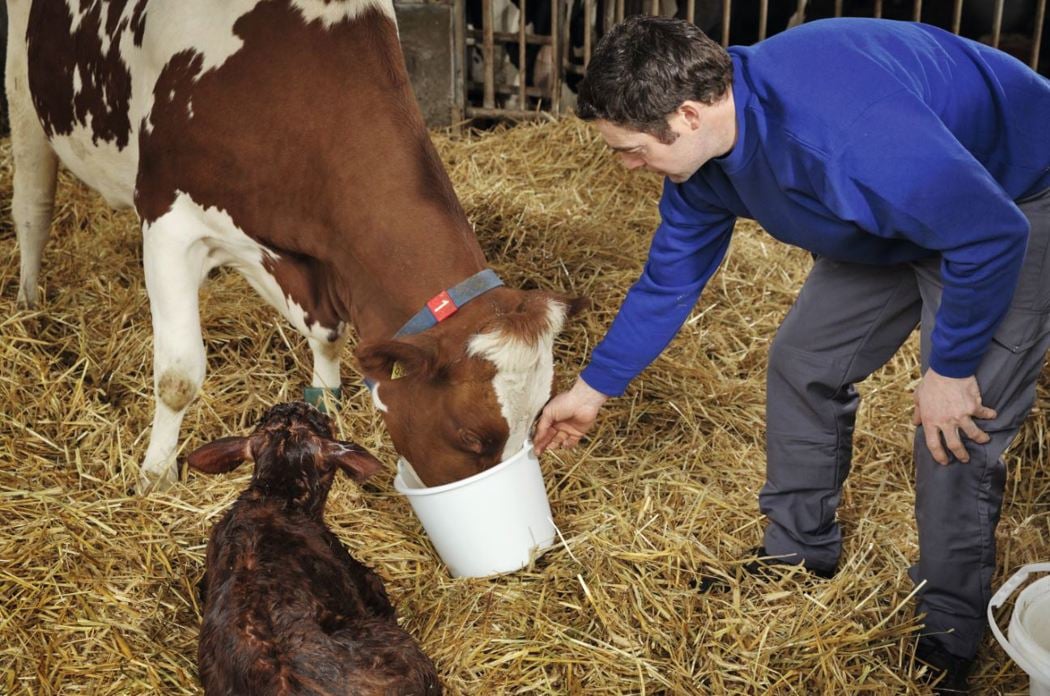Healthy transition to Lactation
Healthy Transition to Lactation
Written by Unity Steinhobel
Unity is the ruminant formulator at Trouw Nutrition South Africa. She completed a master’s degree in animal nutrition at the University of Pretoria. She is a young and upcoming specialist in the field of nutrition and her main focus is formulating premixes and on-farm nutritional solutions for customers. Article courtesy of The Dairy Mail - published October 2021
The transition to lactation has an enormous impact on the performance of dairy cows. The stress and hormonal changes associated with calving and the dramatic increase in demand for energy and calcium can result in serious metabolic stress.
Managing the transition period is one of the most complex tasks of a dairy farmer. Traditionally, problems with the transition to lactation are
believed to be, mainly, caused by the reduction of blood calcium levels at calving and the negative energy balance post-calving. However, studies have shown that systemic immune activation is the main cause of poor transitioning, which then results in hypocalcemia and a negative energy balance.

Reduce Subclinical Hypocalcaemia
Milk and colostrum contain a large amount of calcium, therefore, the daily requirement for calcium increases drastically around calving. Cows try to maintain blood calcium levels above 2,0 mmol/ℓ by
increasing the uptake of calcium from the diet and by mobilizing calcium from their bones. Transition cows enter a state of hypocalcaemia, more commonly known as milk fever if they fail to restore their blood calcium levels.
Subclinical hypocalcaemia in cows can be reduced by:
• Ensuring that individual body condition score at calving is around 3,0-3,5.
• During the dry period, the dietary cation-anion difference (DCAD) should be kept low. Diets should be formulated to have DCAD levels of
−100 to −150 mEq per kg dietary dry matter.
• Calcium intake during the dry period should also be limited. This will result in a higher uptake of calcium from the diet, if diet calcium
levels are increased immediately after calving.
• Supplement additional calcium immediately post-calving to keep calcium levels at adequate levels during the transition. Cows do not eat or drink during calving and supplementation of calcium via the oral route is, generally, the preferred and most effective option.
Ensure the dry cow diet contains enough magnesium. The most important hormone that increases blood calcium levels is parathormone, which requires sufficient magnesium to work properly.
• As cows approach calving, dry matter intake should be optimized by formulating a balanced diet with sufficient energy and effective fibre.
• Avoid any drastic changes in dietary ration
Manage negative energy balance after calving
At the start of lactation, most cows are in negative energy balance due to the increased milk production and subsequent lowered dry
matter intake. Dairy cows compensate for the negative energy balance by mobilising body fat, which may result in subclinical ketosis, leading
to a reduction in both milk yield and milk protein percentage.
In order to reduce the period in which the animal is in a negative energy balance, it is important for the animal to increase its dry matter
intake as soon as possible, therefore,
• The post-calving diet should be highly palatable to stimulate feed intake.
• The dairy ration must have a higher energy concentration to compensate for the lower feed intake.
• The diet should also contain sufficient levels of effective fibre in order to not disturb the rumen environment.
• Directly before and during calving, cows do not eat and drink, but they do lose water and electrolytes. After calving, cows should be
supplemented with calcium, electrolytes, and energy to restore their nutrient balance and hydration levels.
Prevent Hindgut Acidosis
In the period immediately after calving, there is a strong increase in the amount of rapidly fermentable carbohydrates in the diet of modern
dairy cows. It is a well-known fact that high-energy diets put pressure on rumen fermentation, often leading to subclinical rumen acidosis. Recent studies have shown that feeding high amounts of carbohydrates can have an equally strong impact on the fermentation processes within the hindgut.
Excessive hindgut fermentation reduces the pH within the hindgut and induces a shift in the microbial population. This causes damage
of the gut epithelium, resulting in a leaky gut that, eventually, activates the immune system. The immune system requires a lot of energy and
nutrients, which otherwise would be used for milk production.
Preventing hindgut acidosis requires careful management of rumen fermentation through effective nutrition and feed management.
• The ratio of effective fibre and energy should be carefully balanced. Farmers should ensure that the forage proportion of the diet is between 60–70%.
• Inspecting the cow’s manure can provide valuable information on rumen function and feed digestion. Signs such as changes in faecal appearance, consistency, and particle size can offer clues on
potential changes in the animal’s gut, allowing the farmer to take appropriate action. Signs that are typically attributed to acidosis, such as loose and frothy faeces or mucin casts, are normally signs of
hindgut acidosis.
• Supply nutritional additives or prebiotics that promote ruminal fermentation in order to reduce the effect of hindgut acidosis.
A Healthy transition
To become more efficient and sustainable, farmers need to use the full production potential of each cow. Knowing the importance of gut health and managing the metabolic adaptions pre- and post-calving,
will ensure a healthy transition to lactation that not only benefits herd production but also future reproduction.